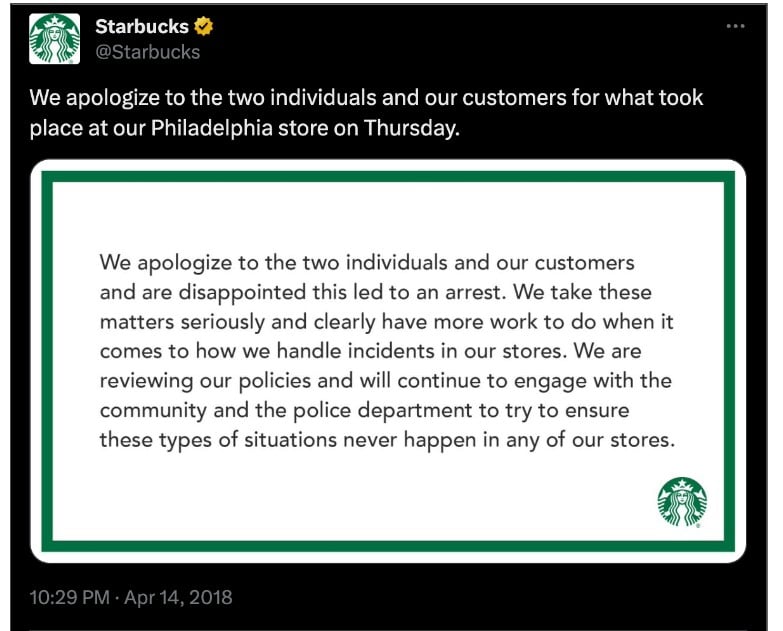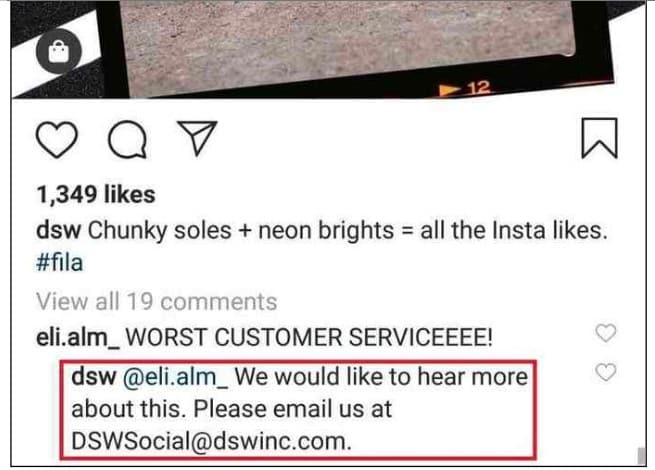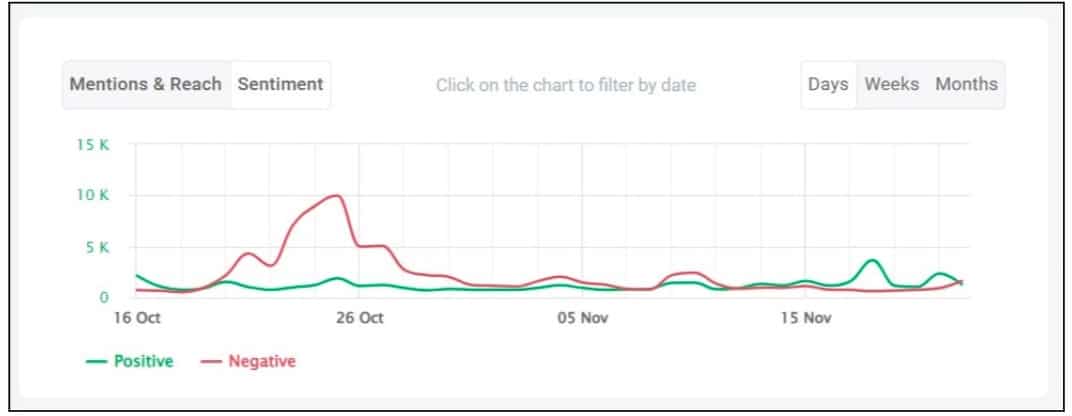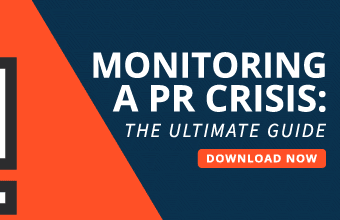Social media crises are more common than you may realize. If you are working on the social media team of a famous brand, chances are you have already handled some of those social media disasters.
Think of all your favorite brands like H&M, United Airlines, Burger King, and Starbucks, which have undergone massive social media backlashes. And how do these brands deal with these issues? By having a structured social media crisis management plan that identifies potential crises quickly and takes action ASAP.
In this article, we talk about some of the tried and tested strategies that stand out each time your brand faces a social media backlash.
Understanding social media crisis
A social media crisis is a destructive and unexpected event on social media platforms that significantly harms an organization’s reputation. It arises from various sources, such as customer complaints, scandals, misinformation, or public backlash.
On International Women’s Day, Burger King posted the below tweet and soon became the target of a lot of backlash:

While the intention was to point out a sexist notion of society, the situation heated up quickly, and Burger King’s social media team had to come to the brand’s rescue by deleting the tweet.
It is important to note that not every negative mention or complaint on social media qualifies as a crisis. Routine issues, unrelated events, or individual opinions that do not gain significant traction should not be mistaken for a crisis. But, when negative sentiment spreads rapidly, generates intense public scrutiny, or threatens a brand’s reputation, it becomes imperative to address it as a crisis.
Establishing a crisis management plan
You need a well-defined crisis management plan to manage a social media crisis effectively. This plan should outline the steps and procedures to be followed during a crisis, ensuring a swift and coordinated response.
Here are the critical components of a crisis management plan:
Creating a crisis response team and clear escalation procedures
- The first step in developing a crisis management plan is to assemble a crisis response team. This team should consist of individuals from various departments within the organization, including public relations, marketing, customer service, legal, and senior management. Each team member should have a clear role and responsibility assigned to them.
- Also, establish clear escalation procedures to ensure that critical information reaches the appropriate decision-makers promptly. This will facilitate effective decision-making and streamline the crisis management process.
Preparing predefined protocols for various crisis scenarios
- In addition to assembling a crisis response team, preparing predefined protocols for different crisis scenarios is essential. These protocols should outline specific actions based on the nature of the crisis. For example, protocols for handling a customer complaint may differ from those for managing a scandal or misinformation.
- The crisis response team should act swiftly and efficiently by having predefined protocols, minimizing potential damage, and ensuring a consistent response across all social media platforms.
Training employees on crisis communication and response
Training employees on crisis communication and response protocols is essential to ensure a cohesive and effective crisis response. This training should include:
- Educating employees about the potential risks and impact of social media crises and guiding how to handle various crisis scenarios.
Like in Burger King’s case, deleting the tweet wasn’t enough. Burger King’s social media team posted another tweet the same day apologizing to their followers and stating their true intention behind the tweet:

- By training employees, brands empower them to act as ambassadors during a crisis, ensuring that their responses align with the overall crisis management strategy and brand values. This will help maintain consistency in messaging and enhance the brand’s reputation.
Monitoring and early detection
Early detection is crucial in effectively managing a social media crisis. By monitoring social media platforms and implementing social media listening tools, brands identify warning signs and potential crises before they escalate.
Here are some critical strategies for monitoring and early detection:
Implementing social media listening and monitoring tools
Social media listening and monitoring tools can help brands track brand mentions, sentiment, and engagement on various social media platforms. These tools provide real-time insights into conversations about the brand, enabling brands to identify potential crises early on.
These tools also provide alerts and notifications when there is a sudden increase in negative mentions or a change in sentiment, allowing brands to respond promptly and address the issue before it escalates.
Identifying warning signs and early signals of a potential crisis
By closely monitoring social media platforms, brands can identify warning signs and early signals of a potential crisis. These warning signs may include increased negative sentiment, a surge in customer complaints, or the spread of misinformation about the brand. By proactively identifying these warning signs, brands can quickly address the issue and prevent it from becoming a full-blown crisis.
Examples of successful early crisis detection on social media
Numerous brands have successfully detected and managed potential crises through early detection on social media. For example, Snickers received a lot of backlash from their Spanish customers for posting a homophobic commercial. Before the backlash became a full-blown crisis, Snickers’ social media team removed the commercial from television and acknowledged their mistake. Similarly, using automated accounting can help brands swiftly assess and address financial implications during such crises, ensuring timely and accurate responses

All of these were possible because the brand continuously monitored audiences’ sentiments on social media and quickly identified the seeds of what could become a significant crisis.
Immediate response protocol
- When faced with negative feedback or a social media crisis, brands must act promptly and acknowledge the issue publicly. By promptly responding to the concerns raised, brands show they are listening and committed to addressing the problem. This helps prevent the situation from escalating further.
- In response, brands should empathize with the affected parties and demonstrate genuine concern. This helps defuse tension and show that the brand values its customers’ perceptions and experiences.
- It’s important to provide transparent and factual information without speculating or making false claims. By being open and honest, brands can build trust and credibility with their audience.
Open communication and transparency
- During a social media crisis, brands need to keep open communication channels and address concerns their audience raises. This can be done by actively monitoring social media platforms and responding promptly to comments, messages, and mentions.
- To maintain transparency, brands should be honest and upfront in their communication. They should avoid making false promises or misleading statements. By providing accurate information and updates, brands can help manage expectations and minimize the spread of misinformation.
Apologizing effectively
In a social media crisis, a sincere and genuine apology can go a long way in diffusing tension and rebuilding trust. Brands should craft an apology statement acknowledging any mistakes or shortcomings and expressing genuine regret for the impact caused.
Brands need to take responsibility for their actions and avoid deflecting blame. By demonstrating a willingness to rectify the situation, brands can show their commitment to making amends and learning from the experience.
In 2018, two black men in a Philadelphia Starbucks were arrested for no reason. This incident was captured and reshared across social media, pointing out the racism of the police department. Starbucks apologized sincerely for this incident to ensure that they were against racism.

Mitigation and containment strategies
To mitigate the impact of a social media crisis, brands should take corrective actions and prevent further escalation. This may involve addressing misinformation and correcting false narratives. By promptly addressing inaccuracies and providing accurate information, brands can help set the record straight and minimize the spread of false information.
Implementing strategies to contain the crisis’s impact is also crucial. This may involve monitoring and moderating online discussions, responding to concerns, and taking steps to prevent the crisis from spreading further.
Engaging with the community and stakeholders
Brands should actively engage with their community and stakeholders during a social media crisis. This can be done by regularly responding to comments and queries and encouraging positive engagement and feedback from loyal customers. Engaging with brand advocates and influencers can also help spread positive messages and counteract negative sentiment.
Note how Fila responded to a customer’s negative comment and asked them to reach out so the brand can address the issues they are facing:


Rebuilding trust and reputation recovery
Rebuilding trust and recovering from a social media crisis takes time and consistent effort. Brands should develop a long-term strategy to restore trust post-crisis. This may involve consistently delivering on promises and commitments, addressing customer concerns, and demonstrating a commitment to improvement.
Success stories of brands that have recovered and improved their reputation post-crisis can provide valuable insights and inspiration. By learning from these examples, brands can implement strategies to rebuild trust and strengthen their reputation.
Learning and evaluation
After a crisis has been resolved, brands need to conduct a post-crisis evaluation and analysis. This involves identifying lessons learned and areas for improvement in their crisis management strategies.
By analyzing the effectiveness of their response and identifying any gaps or shortcomings, brands can make necessary adjustments and improvements for future crises. This ongoing learning and evaluation process is essential for continuous improvement and preparedness.
Proactive Measures for Future Prevention
Brands should implement proactive measures and crisis response simulations to prevent future crises. This involves establishing clear guidelines for social media engagement, training employees on crisis response protocols, monitoring positive and negative sentiments, and regularly reviewing and updating crisis management plans.

Consistently monitoring brand mentions and sentiment also helps identify potential issues early on. By staying vigilant and proactive, brands can minimize the likelihood of a social media crisis and effectively manage any problems that arise.
Conclusion
Social media crisis management is critical to protecting a brand’s reputation in today’s digital landscape. With a well-prepared crisis management plan, brands can effectively handle negative feedback and safeguard their online presence.
Acting promptly, maintaining open communication, and apologizing sincerely are essential to effective crisis management. Implementing mitigation and containment strategies, engaging with the community, and focusing on rebuilding trust and reputation recovery are crucial for long-term success.
Continuous learning, evaluation, and proactive measures for future prevention are crucial to staying prepared and minimizing the impact of potential crises. By adopting these strategies, brands can confidently navigate social media crises and safeguard their reputation.








